October 11, 2015
Martha O'Kennon
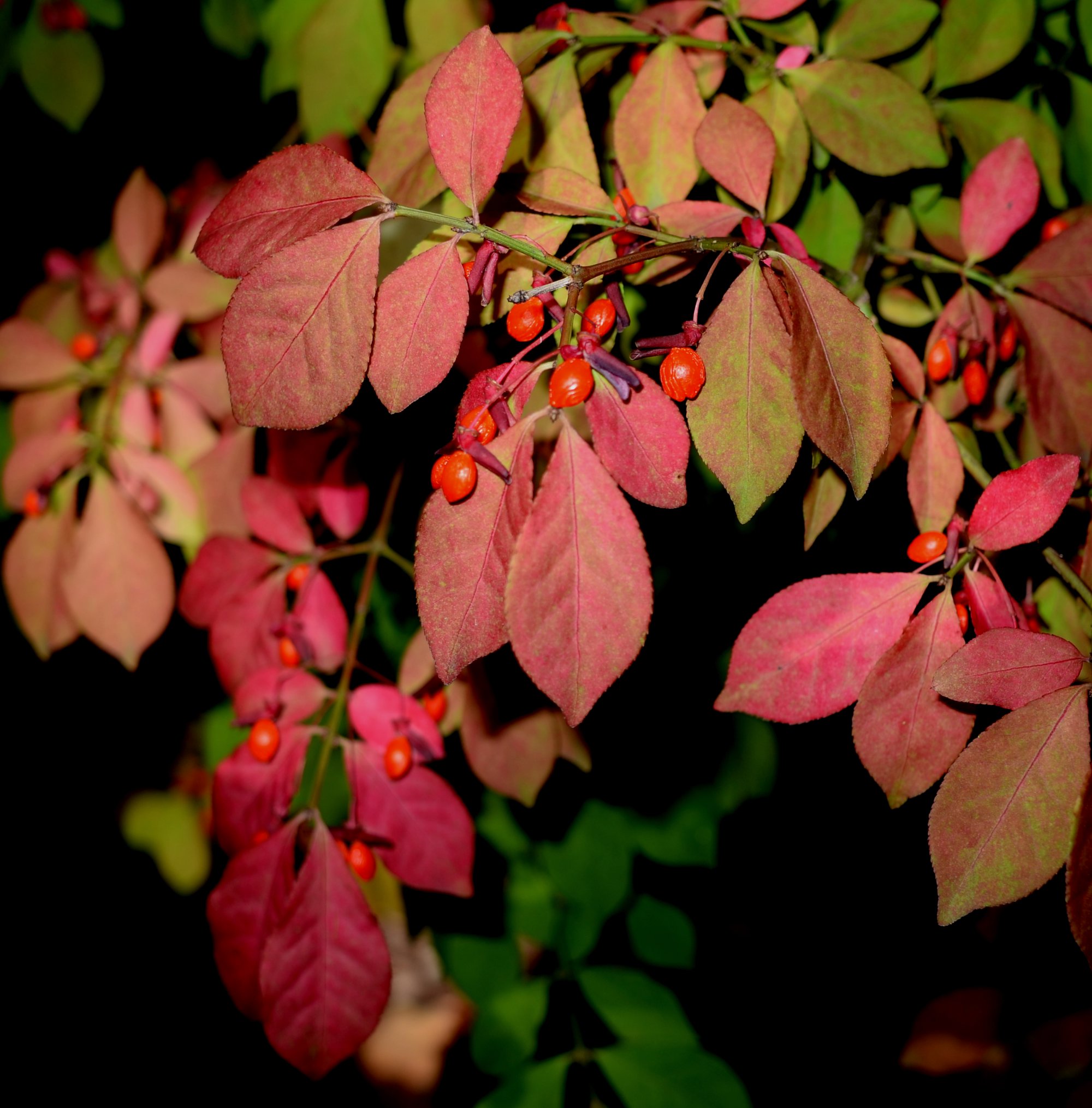
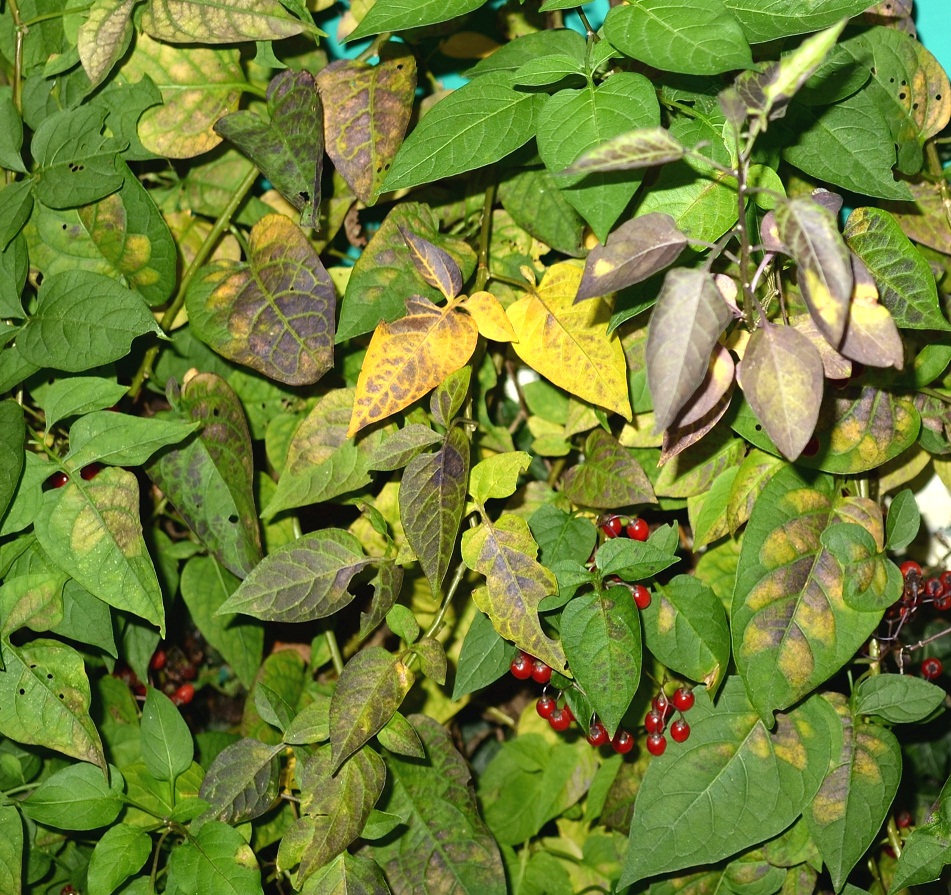
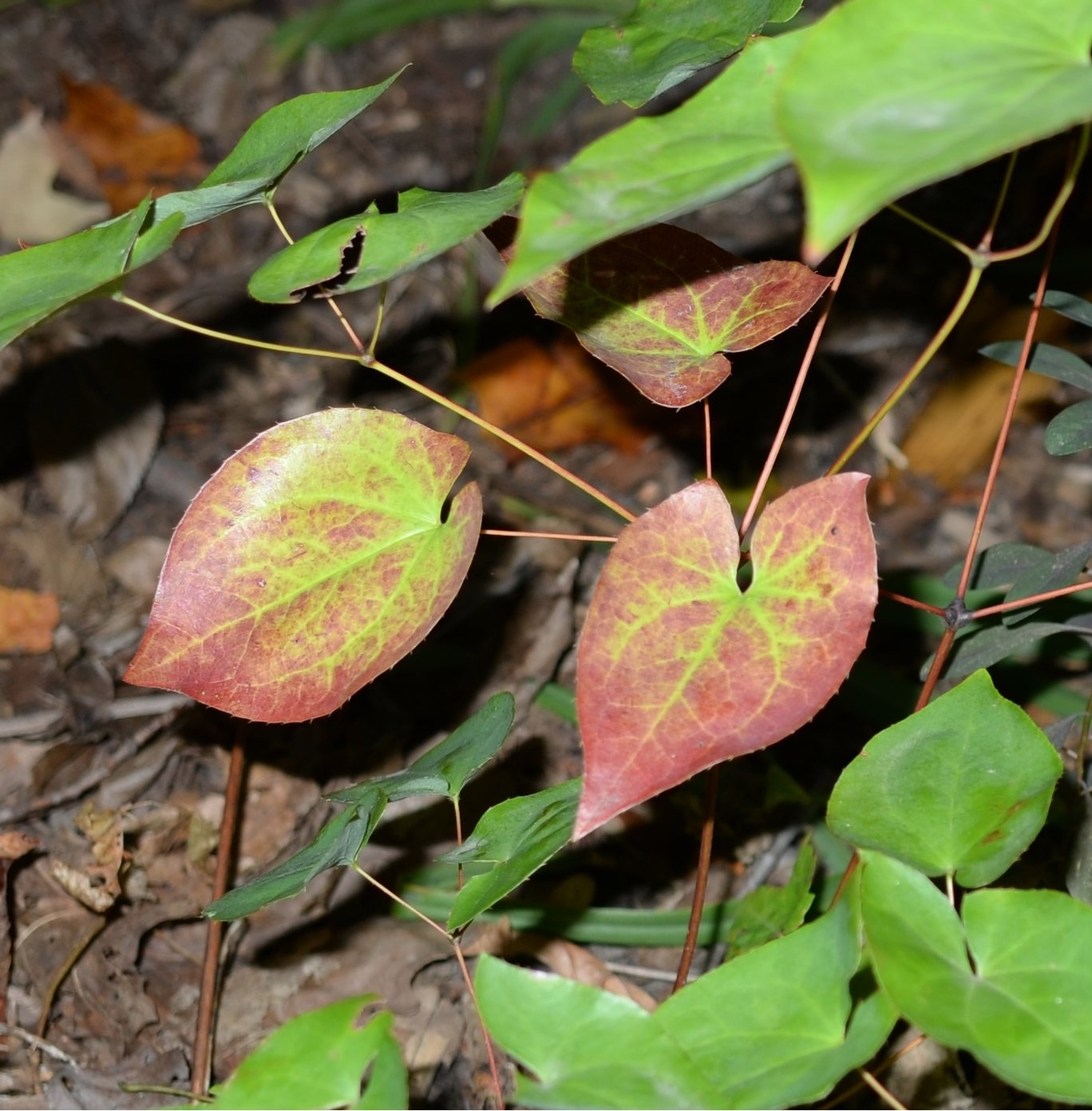
Fall progresses. The euonymus (or burning bush) turns redder and redder. The nightshade turns ever more interestingly purple. And the epimedium (or Bishop's hat) turns red with green veins before it goes to all red. The asters and goldenrod are losing their blossoms - every day fewer flowers. The weather goes back and forth from warm to chilly, rainy to sunny with fall gradually prevailing. But fortunately there are still little surprises.
Remember that there is information in the name of the file for each image. You can see it by mousing over the image - look at the lower left of the screen.
I would try clicking on the image. If the little "+" sign appears, it means you can enlarge again. While it is in "+" mode, click on something you want to see more clearly and it will zoom to that section. Then the info is displayed in the address line above. If the image has been cropped
so that clicking on it doesn't result in a larger picture, you can always hit control plus to increase the size of the image.
The surprise on Thursday was this little green bug with tiny reddish wings, which reminded me of the host of little red and black mirids from May. So far this one is an only child, but one usually signifies more soon When I submitted the little green one to Bugguide.net I was told it was in fact the precursor to the Lygus bugs which are now so rife in the goldenrod.
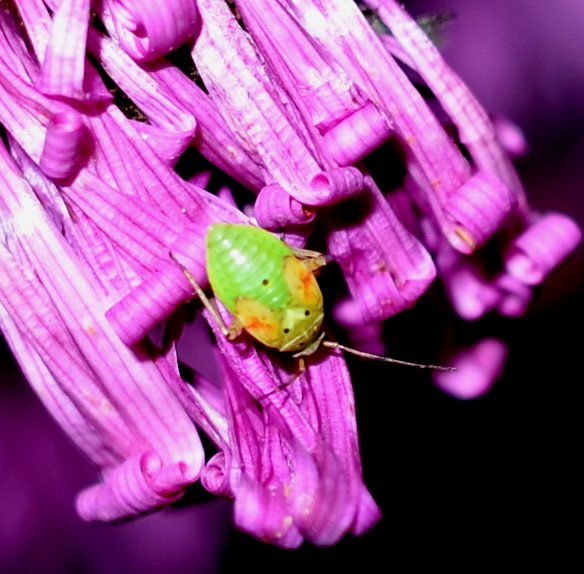
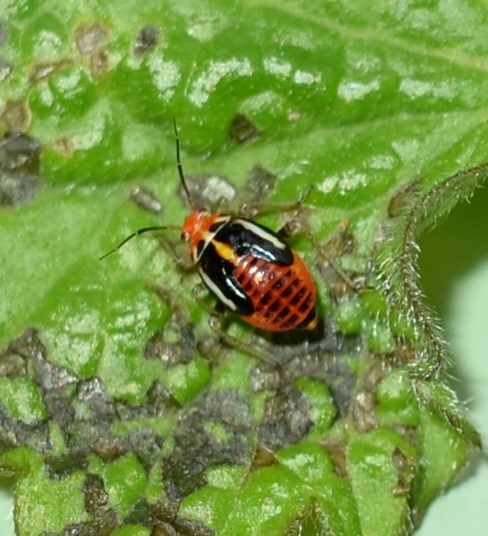
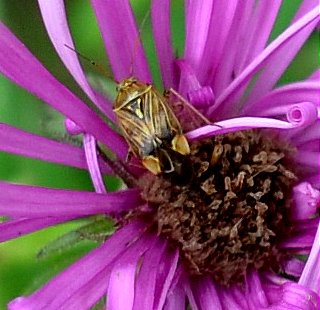
The assassin nymphs are here in great numbers. I've seen all three colors this week: the green, the red and the greyish brown. Here's the back view of the greyish one as it flees from the evil eye of the camera, the green one, the orange one - Oh wait, doesn't the green one look as if it's morphing into the orange one? (or vice versa?) The fourth image is the side view of a green one, showing its feeding tube tucked under its chin.
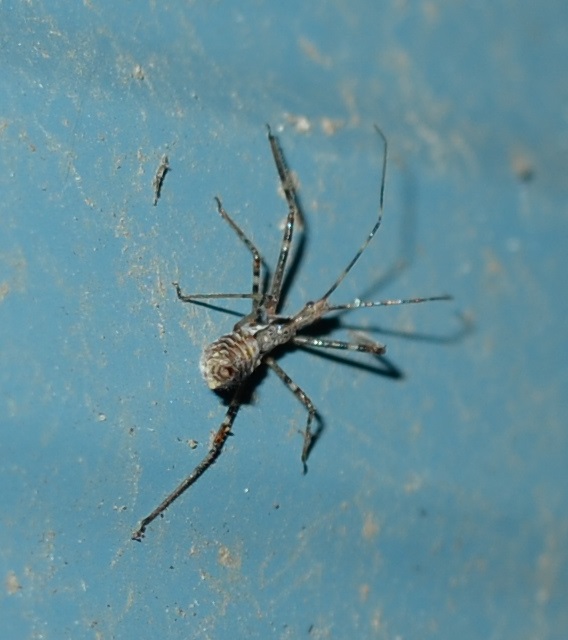


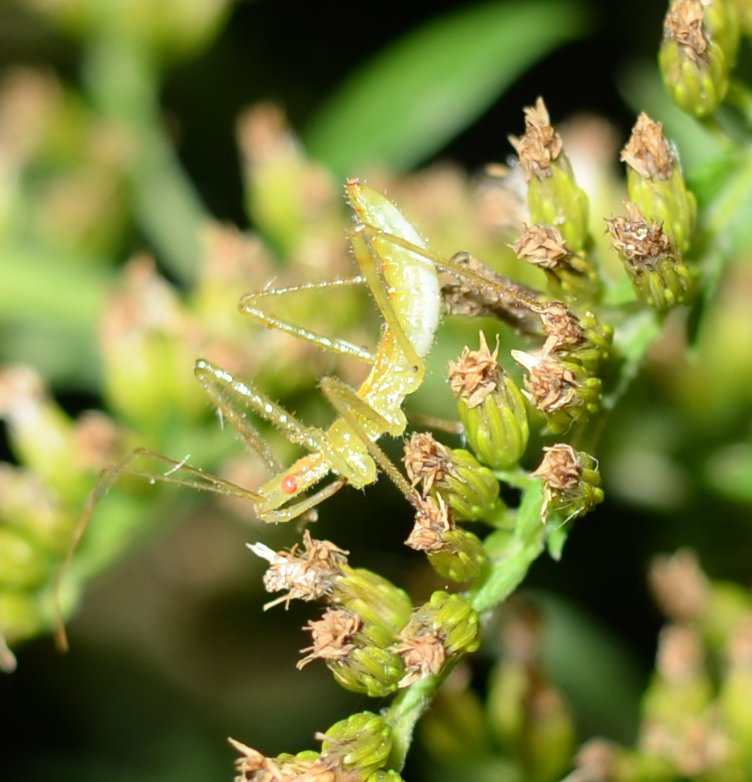
There were a few other bugs too, like this black mystery bug, found on the shop wall I had thought the next one was a stinkbug but now I'm at a loss - I suppose it could still be a stinker. The third one is a stinkbug and looks very curious in this pose. This one I finally figured out was another of those bark lice. Aphids were around too, but I want to talk about them separately, okay?

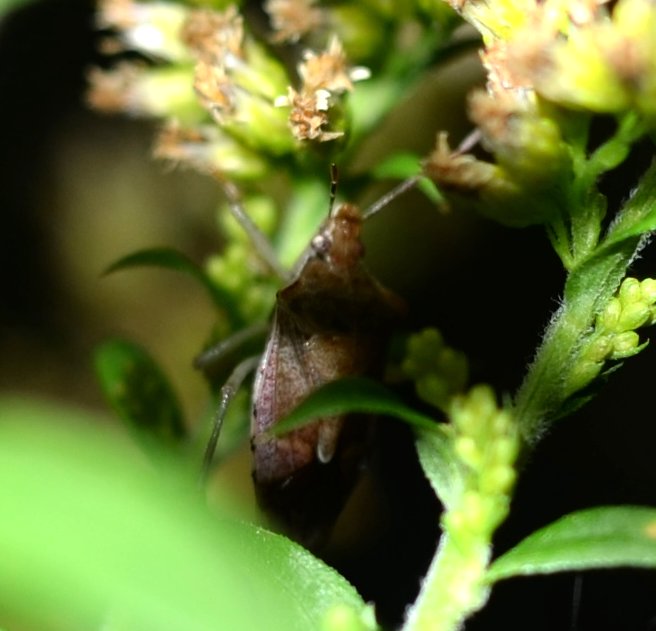
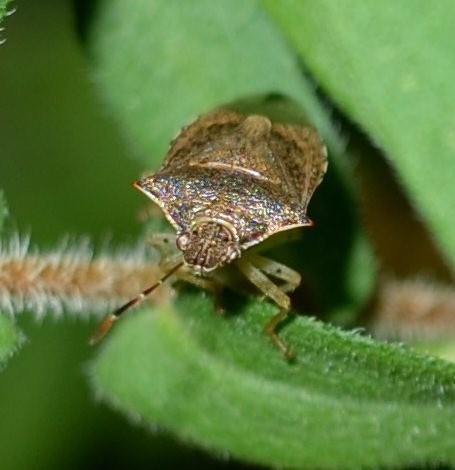

Here are some orphans - they were the only ones of their order that I saw this week. First is a ladybird beetle, peering out from behind a leaf, and then a three-lined potato beetle in an aster. Next is one that I mistook for one of those net-winged beetles, but found was really a "scape moth". This last one is most likely the larva of a dermestid (maybe carpet beetle.
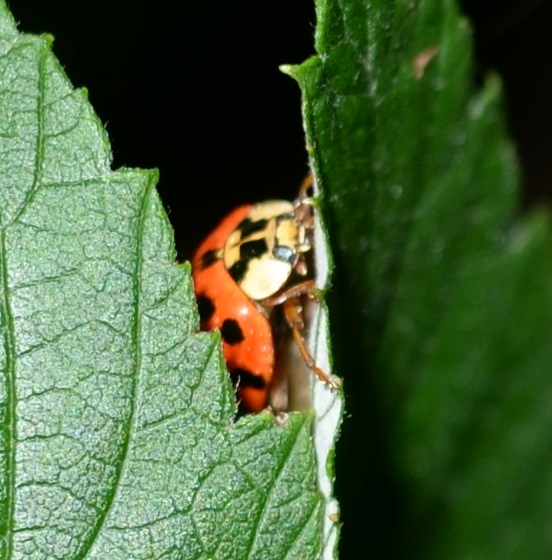
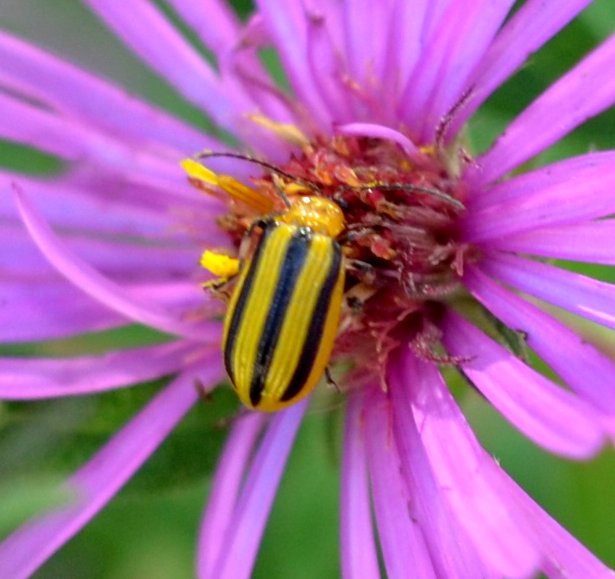
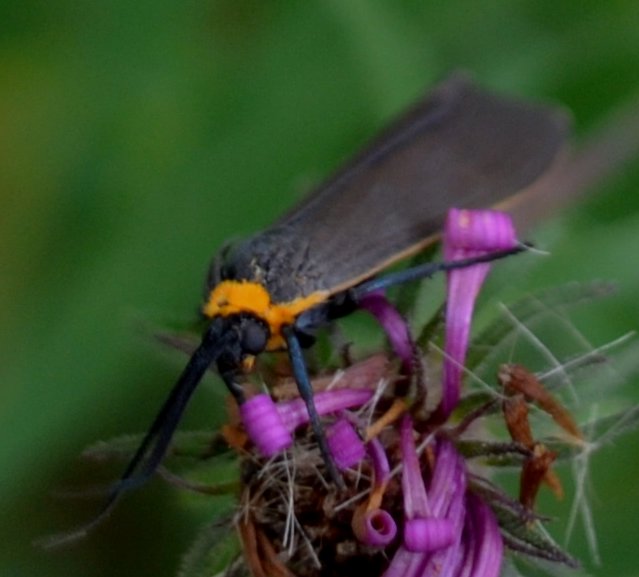
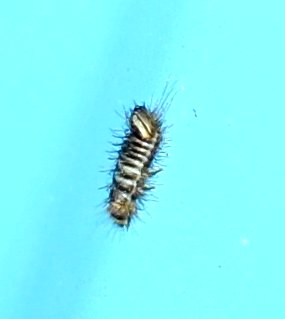
Last year at this time I was finding lacewing larvae in the goldenrod. Here is a picture of one of them from October 2014. It is an interesting little animal, almost looks like a pushme pullyou - both ends look the same from a distance. But this one definitely has the business end aimed at that pinkish aphid. Now we have the aphids: in this picture I was aiming at the fuzzy bug/beetle but focused instead on this little colony of aphid nymphs. Note that some of them are really pinkish, the typical color of goldenrod aphids. But where are the lacewing larvae? Well, one of the things that showed up on the shop wall (hence making themselves ready targets) was this gorgeous lacewing. Does this mean that lacewing larvae will soon be appearing? Or that I missed them and they have already become adult lacewings? It is such a temptation to want things to be the same, down to the second, year after year.
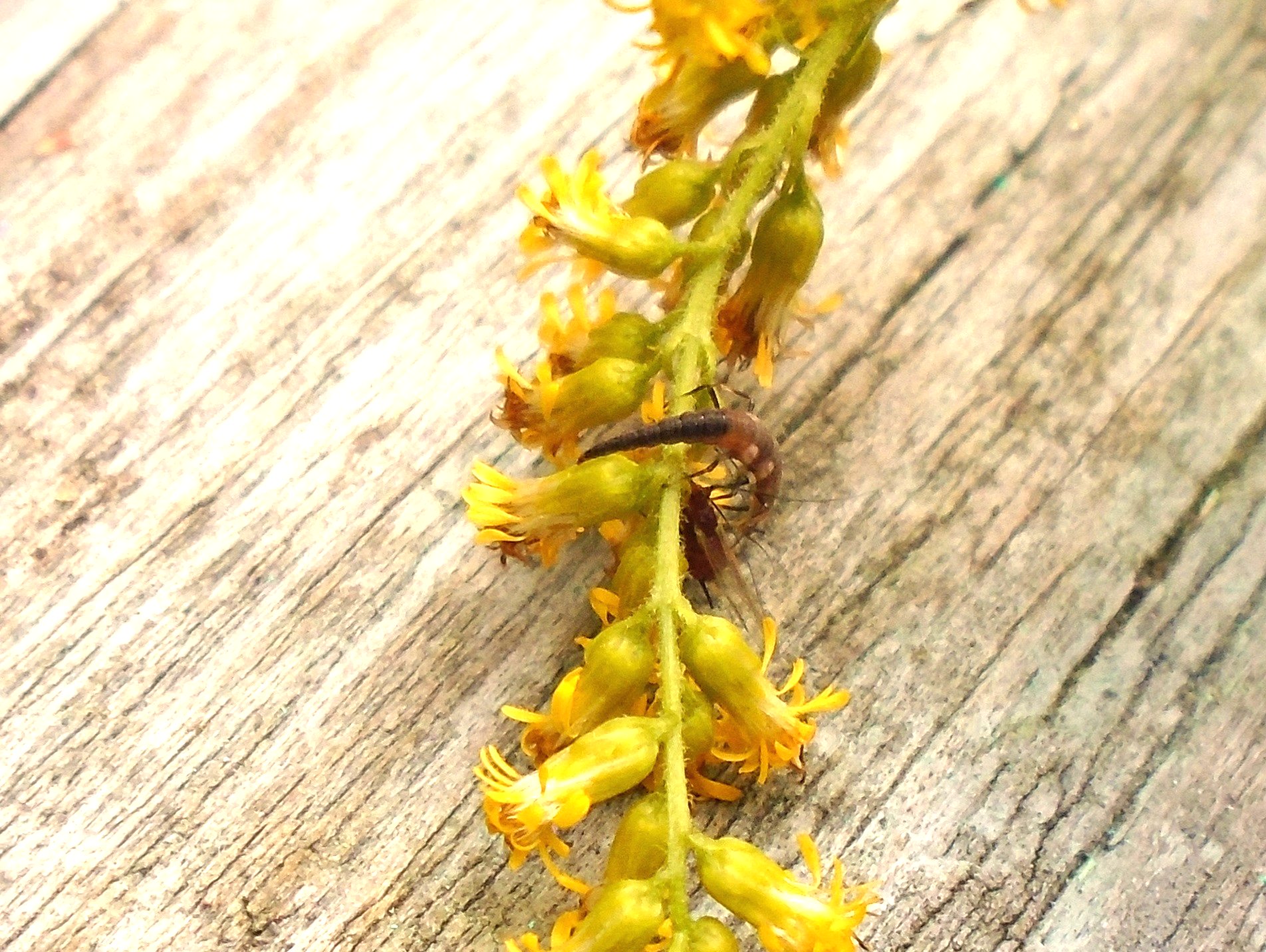
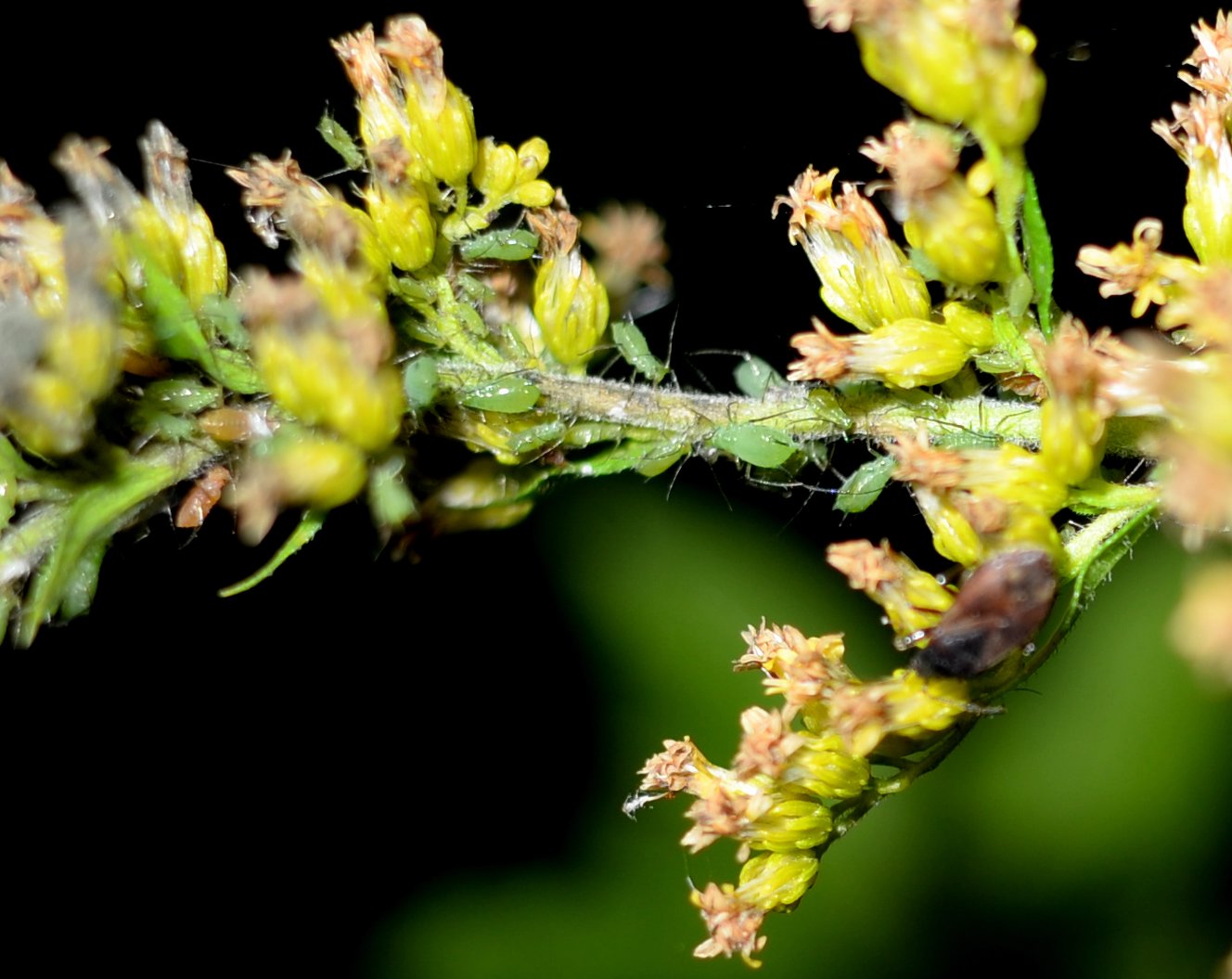
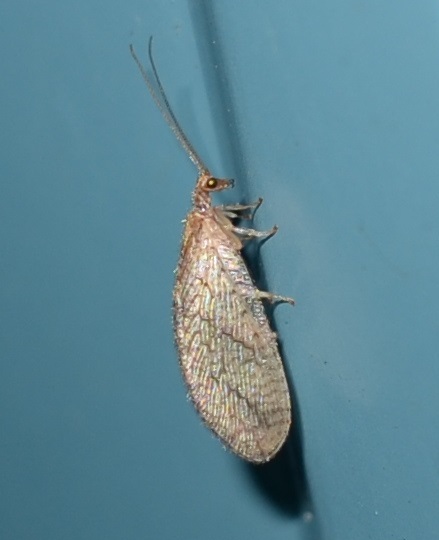
Flies will rule the world. Many of them are still flying about in October. The orange one has appeared almost every week since spring. The hoverfly is one that I only started seeing in the last month when the asters were so glorious. The last picture is probably a crane fly. Its long legs differentiate it from a mosquito.
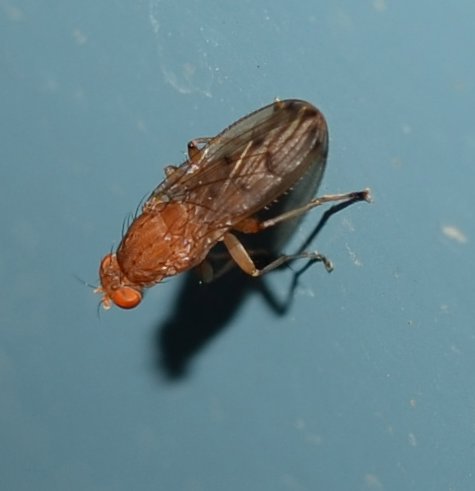
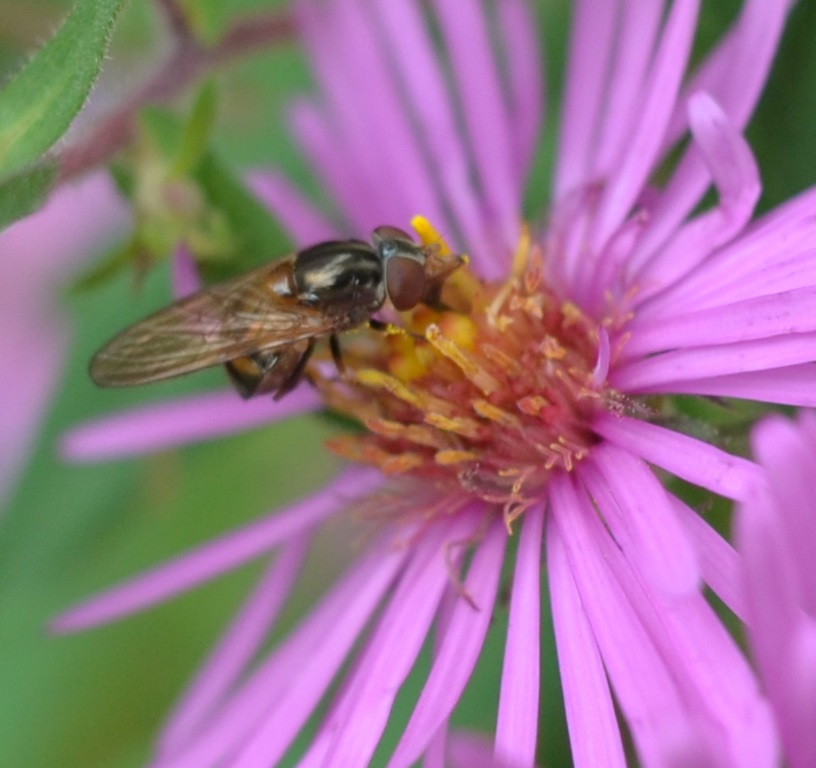
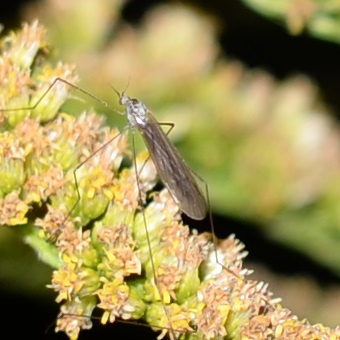
Here is a mosquito or midge with its magnificent beak. The moth fly in the second frame has been around for months. In the last month I was guaranteed to find a half-dozen a day just on the shop outer wall, especially on the east and south sides. The last little fly is still a mystery to me.
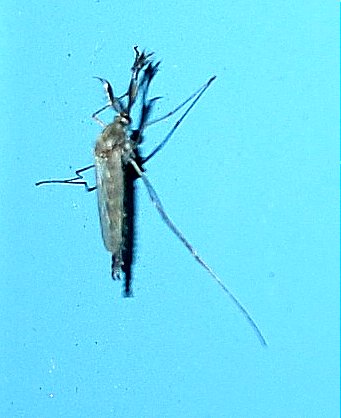
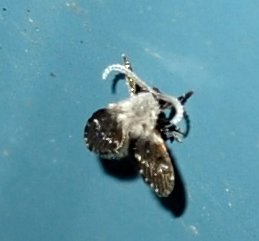
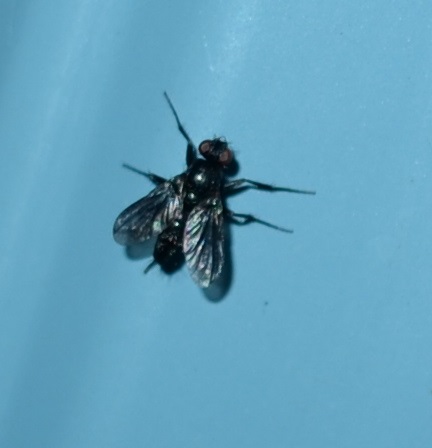
Here are some more floral images. I have an enormous jade plant, which is soon going to a new home, as it has outgrown my back door. If I can leave it out from april or may until the end of October, it will set buds all over. It can then come indoors and bloom for months. The puffs of tiny pinkish flowers will then stay on the plant looking freshly blossomed until February or March. The "Autumn Joy" sedum is past its prime, but in its day it attracted bees and wasps. Can you believe that the raspberry plants still sport ripening black raspberries?

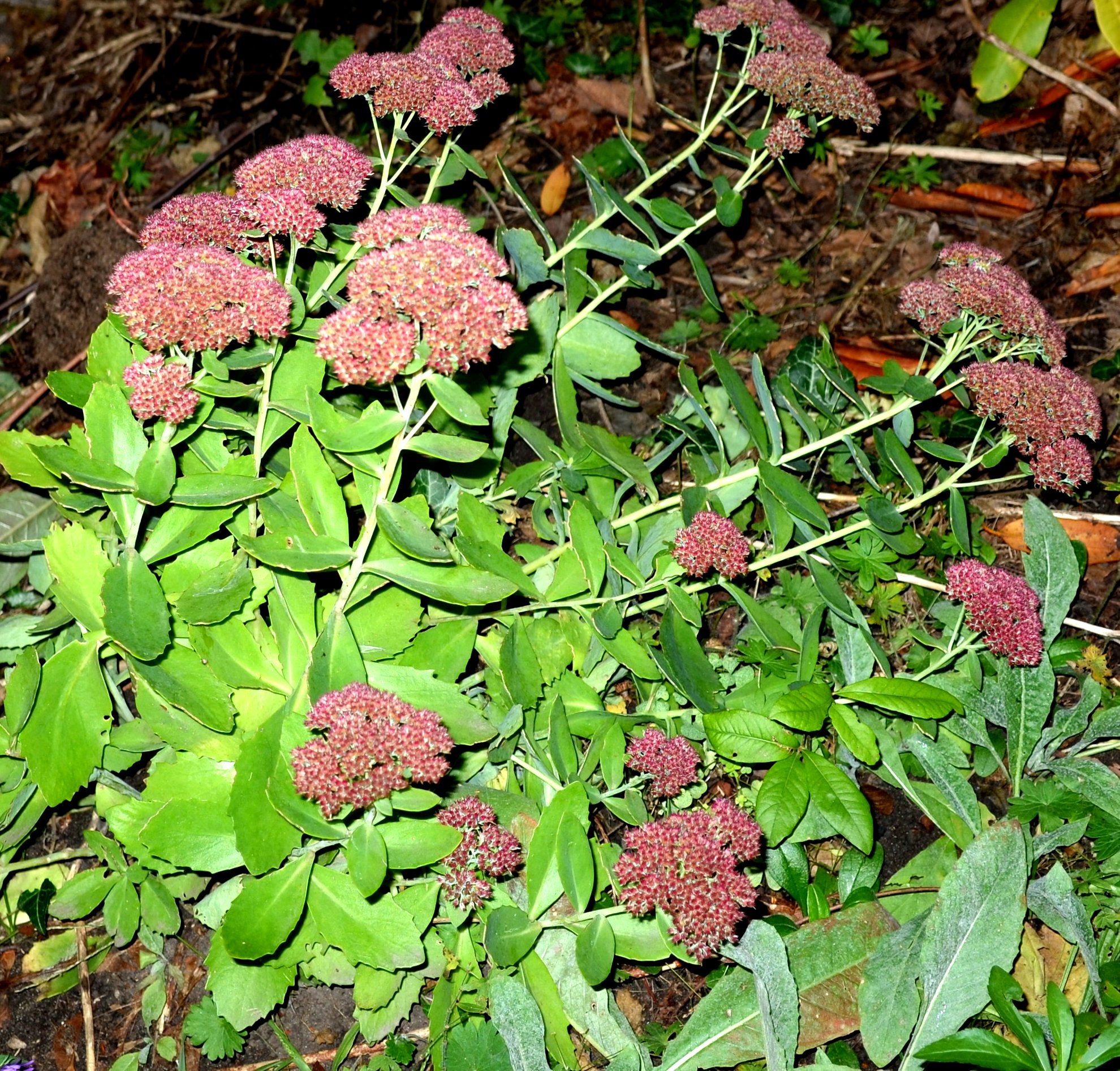
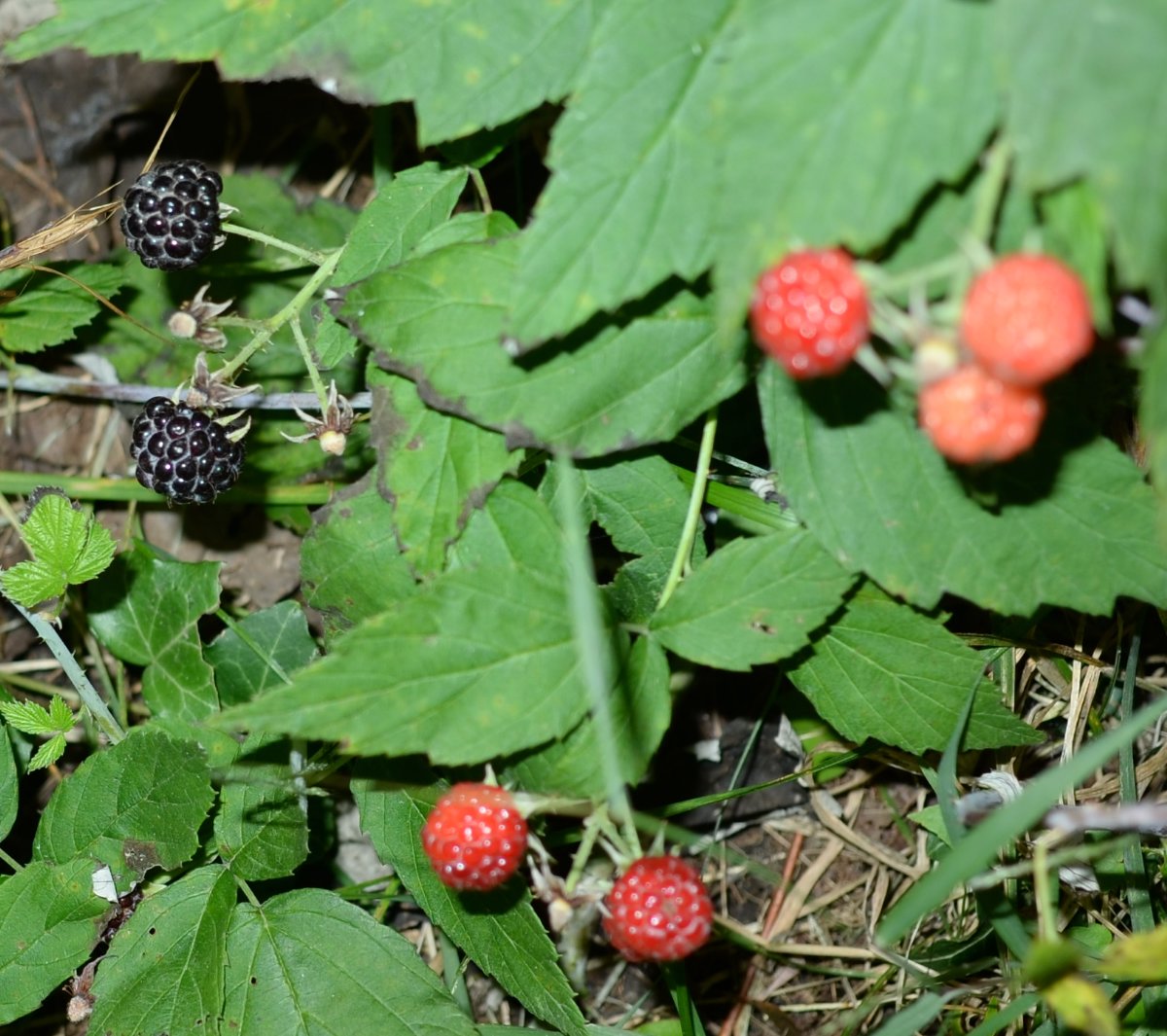
You can see that the number of different species has gone down somewhat. Is it that I didn't stay outdoors as long this week or are things really thinning themselves out? But the spiders are still among the living, and they too are still hatching from eggs laid earlier. Here is the tiniest six-spotted orbweaver I have seen - ever! Its little body is not more than 2 mm across (not counting the legs). But the side view gives it away - see the tiny spots?
There are still quite a few crab spiders, mostly in the fast-fading asters but also in the goldenrod. They fascinate me, not just the way they have of changing color subtly to match their background. Last is a tiny Araneus diademmatus orbweaver, which we have been following from hatchlings to adults and now back to hatchlings. What does it mean that baby spiders are hatching? Are they expecting time enough to go through their life cycle before the snows come?
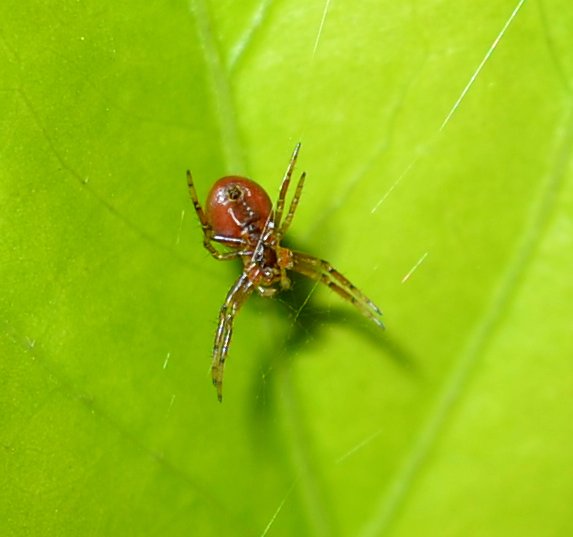
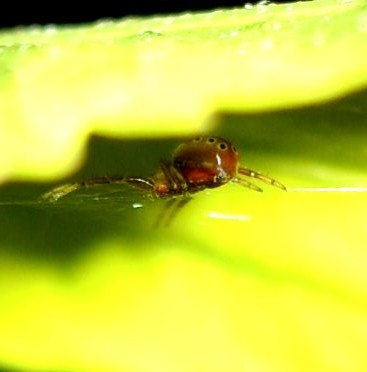
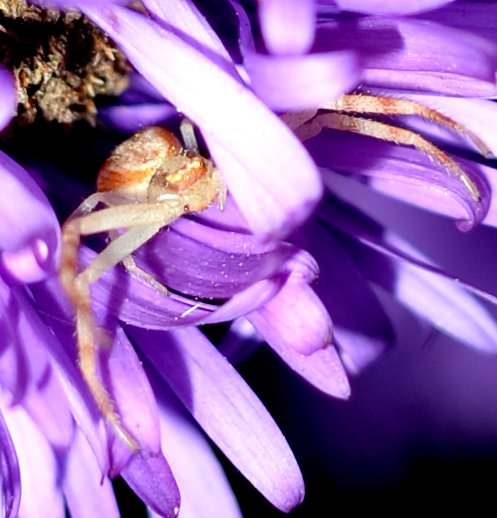
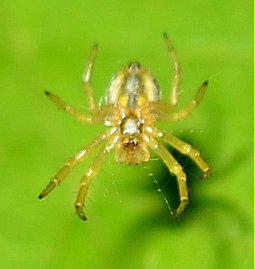
The spiders keep on coming. Here is one I'd never seen before. The second is one that Bugguide told me was a "pirate" spider of the genus Mimetus. Now I am beginning to believe this diagnosis. Three and four are of the "bold jumper", Phidippus audax, the last showing its "headlights", or at least one of the big headlights.


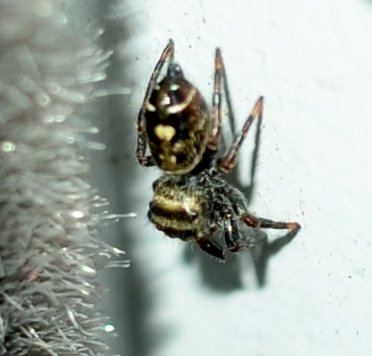
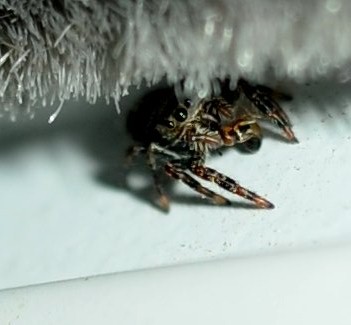
Here is another jumping spider, still nameless here. And then a small common house spider. Now if you will remember that the harvestman (Daddy-long-legs) is not a spider (Remember: insects have three body divisions: head, thorax, and abdomen; spiders have two: head and body, while harvestmen have but one part.), I'll add this one here. They have been faithful friends all summer, and I now think of them as extremely attractive.
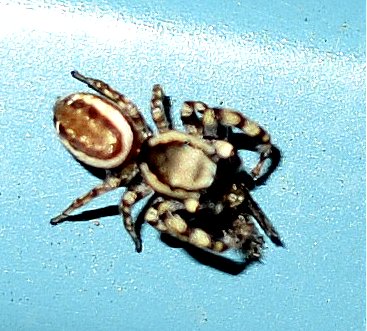
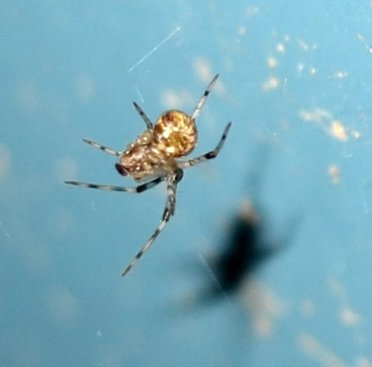
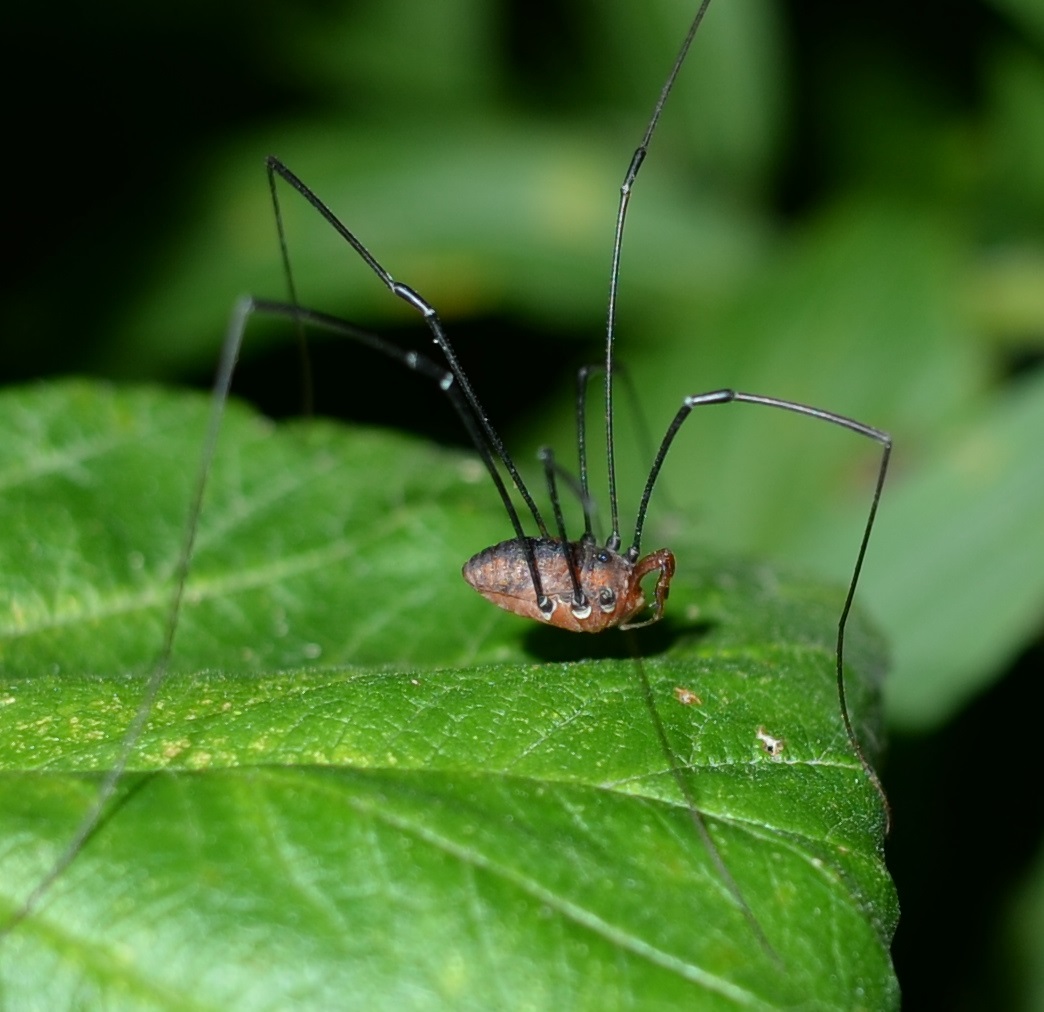
We had a few beautiful little creatures that I haven't identified yet. There was this lovely yellow leafhopper? Fruit fly? Bark louse? And this one - winged ant or wasp?

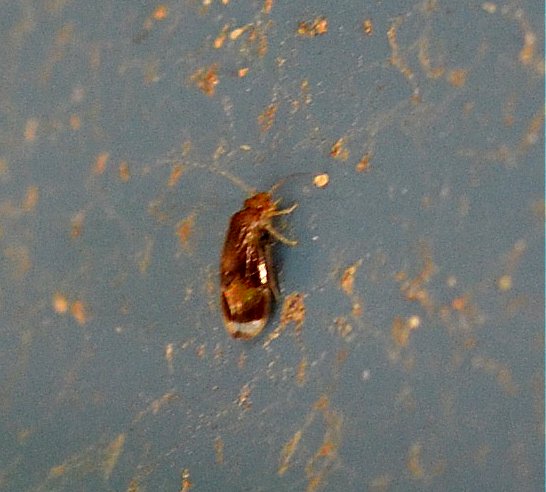
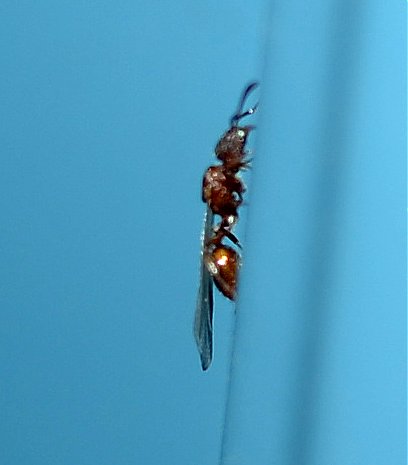
The wasps are seriously thinning. There are spots in the yard where, if you get too close, a couple of yellowjackets will come out and escort you away. So far at least the pathways don't seem to be booby-trapped with subterranean nests. One worrisome thing: I've now found three dead wasps on the back stairs where I often walk barefoot to go down to the kitchen. The other day, I left a jar of juice outside on the deck rail. One little wasp seemed to have gotten caught and died in the jar. When I gently deposited it on the railing, two or three other wasps came to lick the sweet liquid off from it. There were at least three species visiting. Here is the face of a very happy German yellowjacket, and here is the pattern that goes with that face.
The third one is a common aerial yellowjacket who wouldn't beware the fate of the wasp in the jar. Fortunately, I had shook out enough of the juice so that the wasp didn't get stuck.
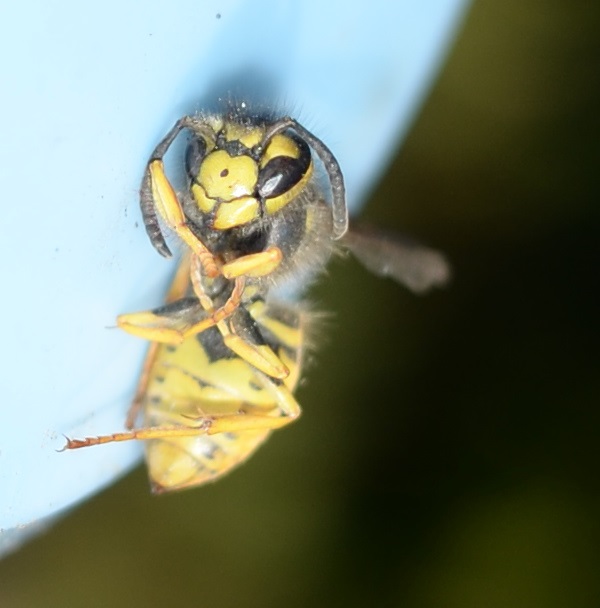
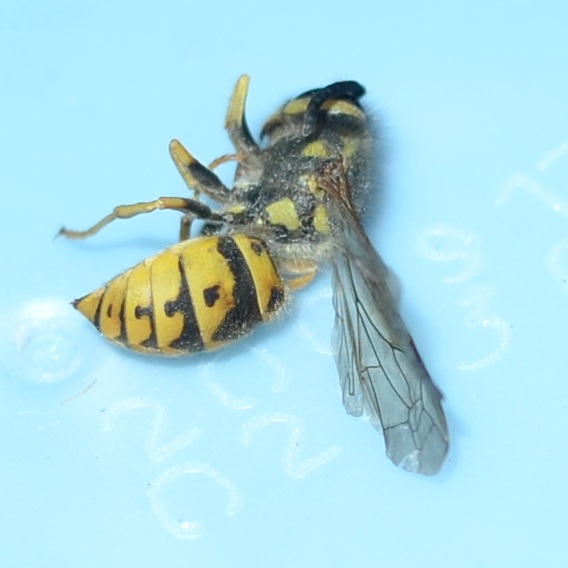
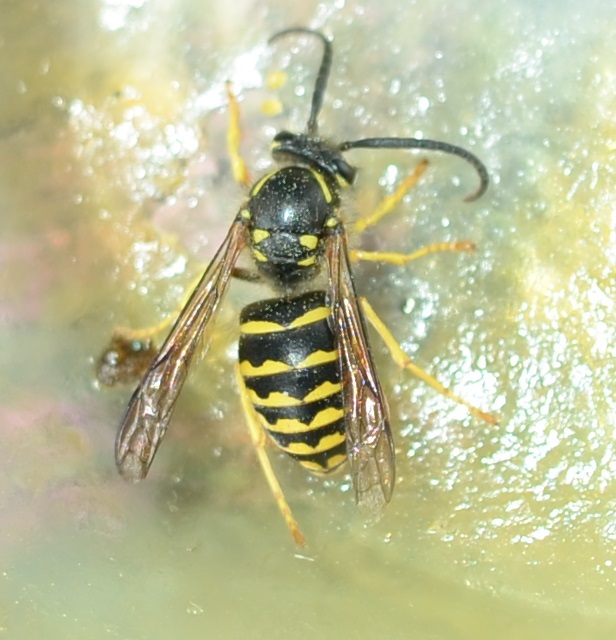
Next a downy yellowjacket popped into the jar, and had a bit of jelled juice. Here's the face of another downy yellowjacket. And here are two happy faces, the one on the left is the downy's, and the one on the right the German's, as they clean up some of the spilled juice.
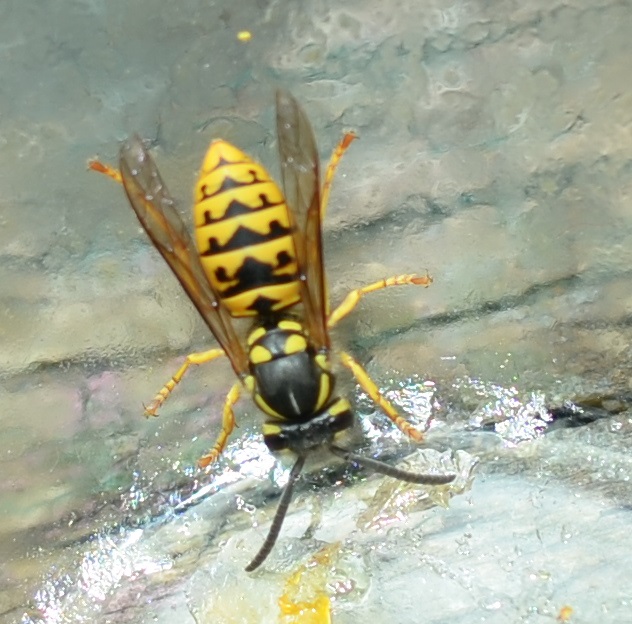
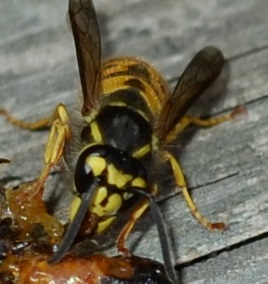
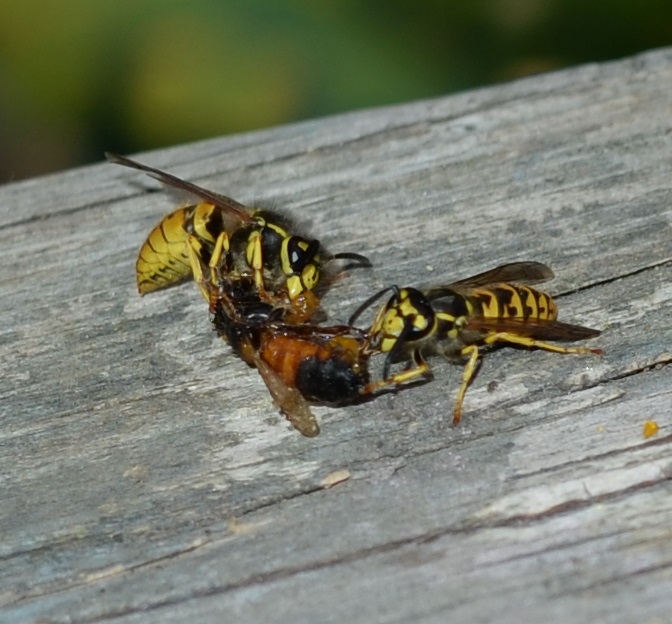
It is wonderful to have a way to attract those local yellowjackets so that you can study them and have them oblivious to you for a while. Corn and fruit juices are both like a big sign saying "Wasp Snack Bar". As you must already suspect, the kinds of plants that attract the bugs are often the kind that your friendly local zoners will not like. Once I had the City Inspector visit on a completely different topic. "Do you let those noxious weeds grow for the butterflies?".
A sheepish "Why yes." "That's all right. I do too." Now I have the National Wildlife Federation's "Wildlife Habitat" signs sitting in the front window. I get the grass mowed every two weeks and weed the volunteers that grow between the plants in the front garden. If the volunteer is an aster, I let it bloom and then either give it away if it is a color my friend doesn't have, or toss it into the compost.
I'll leave you with this scape moth. Its colors coordinate so nicely with the purplish pink aster. And they say the big difference between humans and the rest of nature is that we are the only ones who know how to accessorize (got that quote from Steel Magnolias)!

See you next week and as many more as it takes to slide gracefully into winter or at least later fall!
Back to October 4
On to October 18
Back to 2015 menu
Back to main menu
copyright Martha O'Kennon 2015





















































